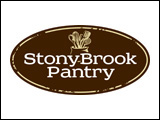The regional marketing and technical services manager with AcuShot reports producer confidence in the use of needle-free injection to administer veterinary compound to pigs is building.
Needle-free injectors use a high speed blast of gas to propel veterinary compounds through the skin, replacing the need for conventional needles.
In 2009 Manitoba introduced a needle-free injection incentive program to encourage the adoption of the new technology on the farm and Saskatchewan is now rolling out its own incentive program.
Mike Agar, the regional marketing and technical services manager with AcuShot, says the use of needle-free injection is very much an on-farm food safety and animal welfare issue and confidence in the technology is building.
It depends on the producer.
I’ve got a number that have jumped on board with our technology and are running with it.
They enjoy the elimination of the needles, the fact that the noise volume of the pigs themselves during a vaccination event has diminished considerably.
The pigs are not stressed so the people handling them aren’t stressed.
The pigs perform better just because they stay on feed.
They don’t get all stressed out by an event.
A needle is designed to be very very sharp and pain free on the first application but after a couple of uses it’s not a very nice instrument, you might as well be using a nail.
It becomes very blunt and the pigs get stressed out and that affects their behavior and their willingness to stay on feed and eat and that’s what we want them to do.
By going needle-free we allow that potential to be realized.
Agar says there are two camps among producers, those who recognize the use of needle-free injection is the way of the future and are anxious to adopt the technology and those who are waiting until they are required to make the change.
For more information on the use of needle-free injection or the needle-free incentives, contact Manitoba Pork, the Saskatchewan Pork Development Board or your local provincial agriculture office.
Source: Farmscape.Ca



